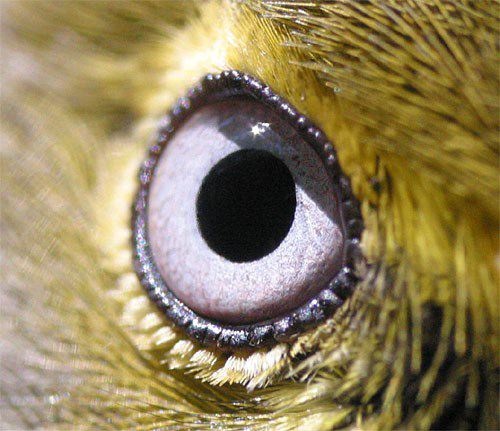The language of birdsong: Pleeek; plick; plid-plid!
Touring the Nation’s Books and Arts page today brought us back to one of our favorite recent pieces by Poetry contributor Ange Mlinko. "Is there a human language without birdsong in it?" asks Mlinko in a review of John Bevis’s aaaaw to zzzzzd: The Words of Birds. She starts with the evolution of birdcalls:
As with humans, specific environments promote dialects. Migratory birds amalgamate “a world-music mix” into their repertoire in their flights across continents. Urban dwellers, to overcome the habitual clamor, have shorter, faster and higher-frequency songs than their country cousins. Species that live in trees have a richer vocabulary than species that live in the open. Aquatic birds make the least complex calls.
And she goes on to note their appearances in poetry:
No wonder that, from the medieval Sufi poem “The Conference of the Birds” to the English nursery rhyme “Cock Robin” to the birds of the caucus-race in Alice's Adventures in Wonderland, our mythologies have paired birds and discourse. We’ve put our arguments in the mouths of birds, and we’ve tried, like John Keats and Walt Whitman, to imagine the songs they would sing if they were human. On the simplest level, as naturalists, we’ve tried to hear them as they really are.
For those linguistically inclined birders out there:
aaaaw to zzzzzd is a miraculous little book: a compressed encyclopedia of our fascination with avifauna. But at its crux is the notion that we can’t quite get a handle on sound—that perhaps birds’ vocalizations and our ears are incommensurable, just as their syrinx and our larynx are different organs. This incommensurability has driven us to heights of ingenuity, and perhaps depths of dementedness. We’ve invented bird whistles with bladders and bellows, twisting keys and slides; we’ve invented flageolets and serinettes for ladies to teach their pet birds human compositions; we’ve outfitted clocks and boxes with songbird automata. In 1910 the German birder Karl Reich first transmitted a birdsong by gramophone; he later perfected his technique by running cables from an electrical microphone in the field to a recording plant about a mile away.
Mlinko also discusses three poetries that emerge from transcription and translation of birdsong. One, "the Dada kind (pleeek; plick; plid-plid);" two, "the lyrical-descriptive kind (black-necked stilt; laughing gull; northern shoveler; oystercatcher);" and three, a list from Bevis of American and British mnemonics for selected birdsongs, which become sort of "reverse-homophonic translations, turning phonetic nonsense into merely English nonsense." For instance:
are you awake? me too (great horned owl)
but-I-DO-love-you (eastern meadowlark)
cheerily, cheer-up, cheerily (American robin)
drop it, drop it, pick it up, pick it up (brown thrasher)
fire, fire, where, where, here, here (indigo bunting)
purity purity purity (bluebird)
spit and see if I care, spit! (white-eyed vireo)
teacher, teacher (great tit)
who cooks for you (white-winged dove)
Read more about the method behind the spelling conventions Bevis used for "aaaaw (black skimmer), je-dit je-dit (ruby-crowned kinglet) and zzzzzd (lazuli bunting)," and what it all adds up to (hint: experiment!), here.



